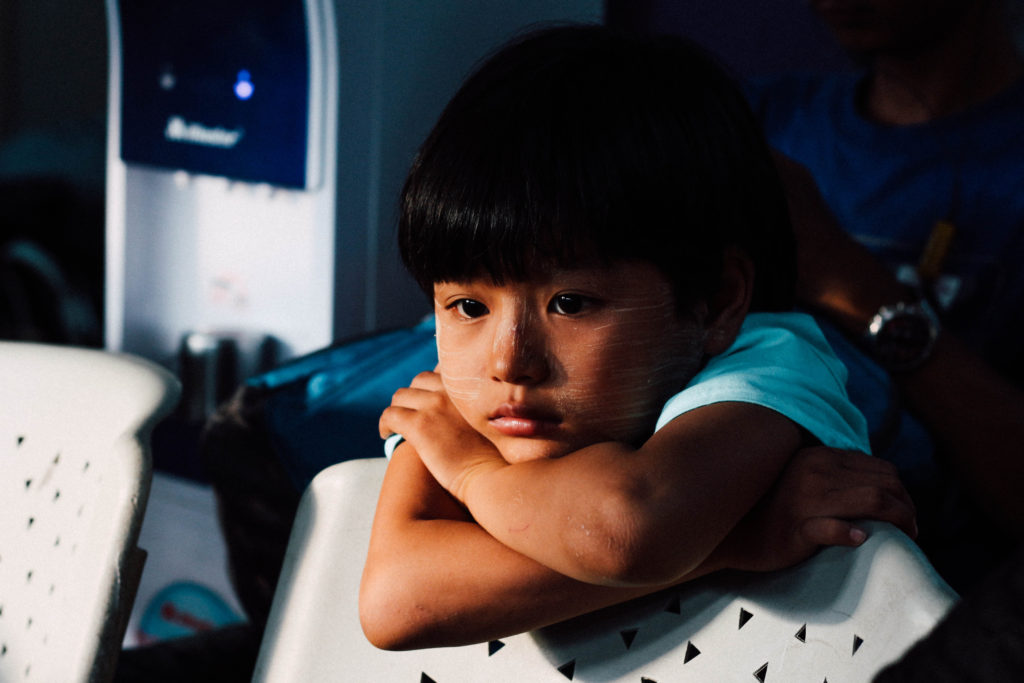It goes without saying that parenting is a tough job. We want to see our children succeed and we want to protect them from the pains and dangers of the world. But what if our children are suffering from a mental or emotional pain? We can’t cover up every pain with a band-aid, but there are still things we can do to help a child who is suffering from anxiety.
If you suspect your child might have adolescent anxiety, here are some techniques that might help:
Yoga
There’s a reason why people of all ages have been practicing yoga around the world for over 3,000 years. Stemming from an ancient Indian practice that aimed to unite the body, mind and soul, yoga can be a great way to start teaching your child to let go of troubling thoughts and be present in the moment. Best of all, it’s a practice you can do together as parent and child. You’ll be passing along healthy habits and reducing your own stress level while bonding with your little one.
Mindfulness Based Meditation
According to the Child Mind Institute, a meditation practice can be great for helping anxious children regain their sense of focus and overall well-being. Meditation is a wonderful tool for dealing with stress and anxiety, teaching children to notice their thoughts, fears and emotions while resisting the need to immediately respond or react.
Breathing Methods
One of the easiest ways to help a frightened or anxious child calm down is by focusing his or her attention on the breath. Start by teaching your child to take a long, slow, deep breath in. Allow your child to feel the air entering his or her lungs, the expansion in the chest as it rises, the sound the air makes. After a few of these breaths, invite your child to rest in this moment. Remind your child that this safe, still, quiet place is always there waiting for him or her. Your child always has the power to return here whenever he or she is ready.
Know Your “Safe People”
Pinpoint at least one “safe person” in each social situation. Who does your child feel safest around at home? A parent? An older sibling? At school, this “safe person” might be a guidance counselor, principal, nurse, or a favorite teacher. Talk with the safe person to ensure he or she is checking in with the child to remind them to stay calm, take deep breaths, and not worry. Communicate to your child that it is safe for him or her to ask to speak to each designated safe person whenever your child feels anxious, stressed or panicked.
Partner with Your Child’s Teacher(s)
If your child’s anxiety disorder begins affecting his or her schoolwork, it might become necessary to have a parent-teacher meeting with your child’s teacher to discuss the situation. Your child’s teacher might be able to reorganize the classroom, change the seating chart and offer additional guidance and help as needed. In addition, be sure to communicate to your child’s teacher about your child’s specific needs regarding his or her anxiety. For instance, children with OCD might sometimes second-guess themselves or turn in assignments late due to constant rewrites and revisions. Once the teacher understands your child’s specific needs, it will be easier to adapt teaching techniques to accommodate them. This will make the learning process much easier for your child, and will reduce stress or frustration for everyone involved.
If you have a child with anxiety, remember: it’s not your fault – or anyone else’s. It doesn’t mean you’re a bad parent, or that there’s anything “wrong” with you or your child. It simply means that your child is processing stress and anxiety in his or her own unique way. Use that knowledge to help your child cope with stress, and to help those around you understand adolescent anxiety. This is one of the greatest ways you can help your child on the path to adulthood.
Noah Smith
noah_smith@wellnessvoyager.com
Wellnessvoyager.com
Photo courtesy of Unsplash by Chinh le Duc






